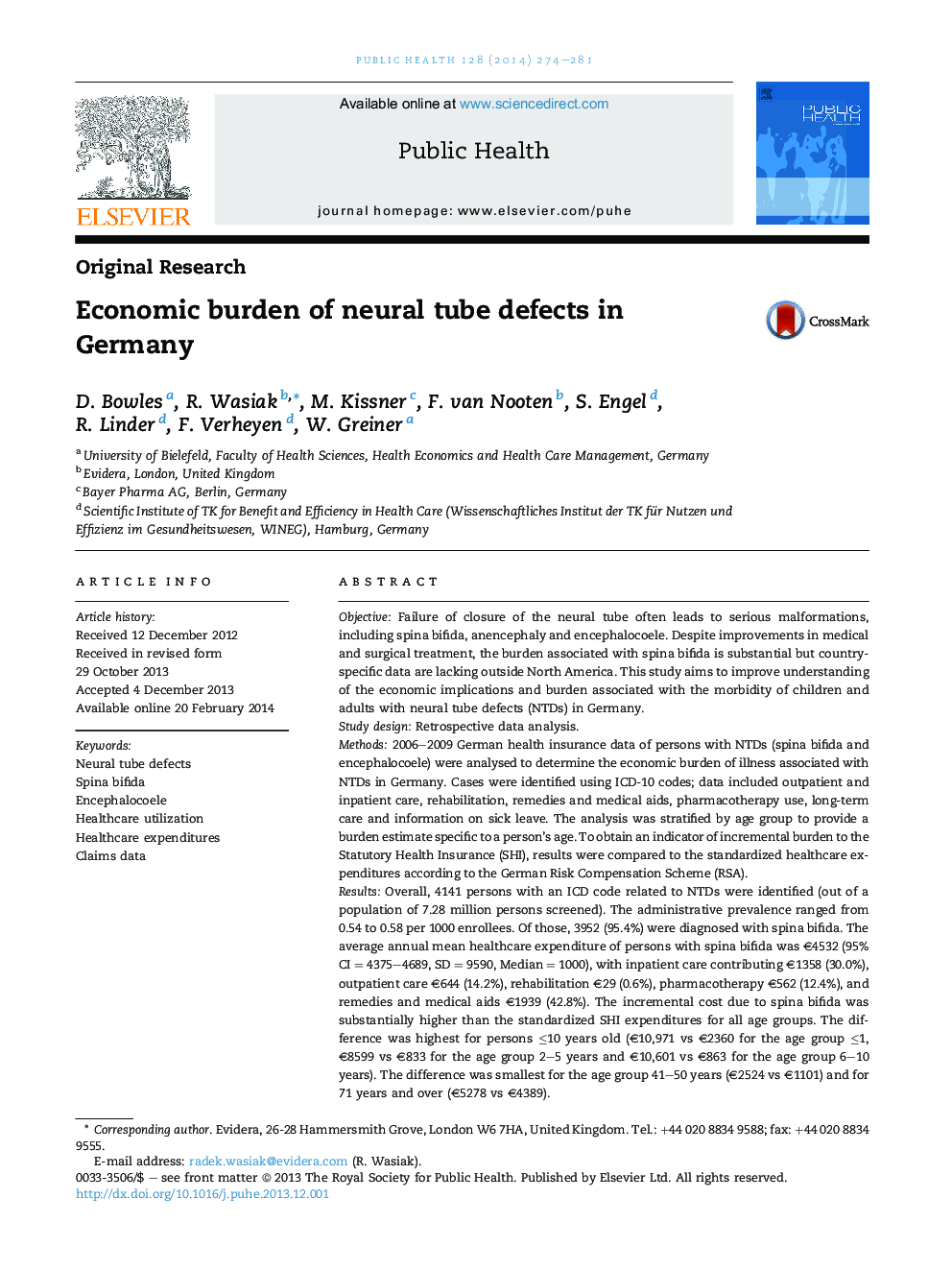| کد مقاله | کد نشریه | سال انتشار | مقاله انگلیسی | نسخه تمام متن |
|---|---|---|---|---|
| 1087521 | 951533 | 2014 | 8 صفحه PDF | دانلود رایگان |
ObjectiveFailure of closure of the neural tube often leads to serious malformations, including spina bifida, anencephaly and encephalocoele. Despite improvements in medical and surgical treatment, the burden associated with spina bifida is substantial but country-specific data are lacking outside North America. This study aims to improve understanding of the economic implications and burden associated with the morbidity of children and adults with neural tube defects (NTDs) in Germany.Study designRetrospective data analysis.Methods2006–2009 German health insurance data of persons with NTDs (spina bifida and encephalocoele) were analysed to determine the economic burden of illness associated with NTDs in Germany. Cases were identified using ICD-10 codes; data included outpatient and inpatient care, rehabilitation, remedies and medical aids, pharmacotherapy use, long-term care and information on sick leave. The analysis was stratified by age group to provide a burden estimate specific to a person's age. To obtain an indicator of incremental burden to the Statutory Health Insurance (SHI), results were compared to the standardized healthcare expenditures according to the German Risk Compensation Scheme (RSA).ResultsOverall, 4141 persons with an ICD code related to NTDs were identified (out of a population of 7.28 million persons screened). The administrative prevalence ranged from 0.54 to 0.58 per 1000 enrollees. Of those, 3952 (95.4%) were diagnosed with spina bifida. The average annual mean healthcare expenditure of persons with spina bifida was €4532 (95% CI = 4375–4689, SD = 9590, Median = 1000), with inpatient care contributing €1358 (30.0%), outpatient care €644 (14.2%), rehabilitation €29 (0.6%), pharmacotherapy €562 (12.4%), and remedies and medical aids €1939 (42.8%). The incremental cost due to spina bifida was substantially higher than the standardized SHI expenditures for all age groups. The difference was highest for persons ≤10 years old (€10,971 vs €2360 for the age group ≤1, €8599 vs €833 for the age group 2–5 years and €10,601 vs €863 for the age group 6–10 years). The difference was smallest for the age group 41–50 years (€2524 vs €1101) and for 71 years and over (€5278 vs €4389).ConclusionExpenditures of persons with spina bifida exceeded the standardized SHI expenditures, indicating a considerable economic burden. The economic burden is continuous throughout the person's life, with high monetary impact and exposure to the healthcare system (especially in early years of life). Efforts should be devoted to improve the prevention of NTDs and provide appropriate support for persons with NTDs, parents, and caregivers—especially in early years.
Journal: Public Health - Volume 128, Issue 3, March 2014, Pages 274–281
